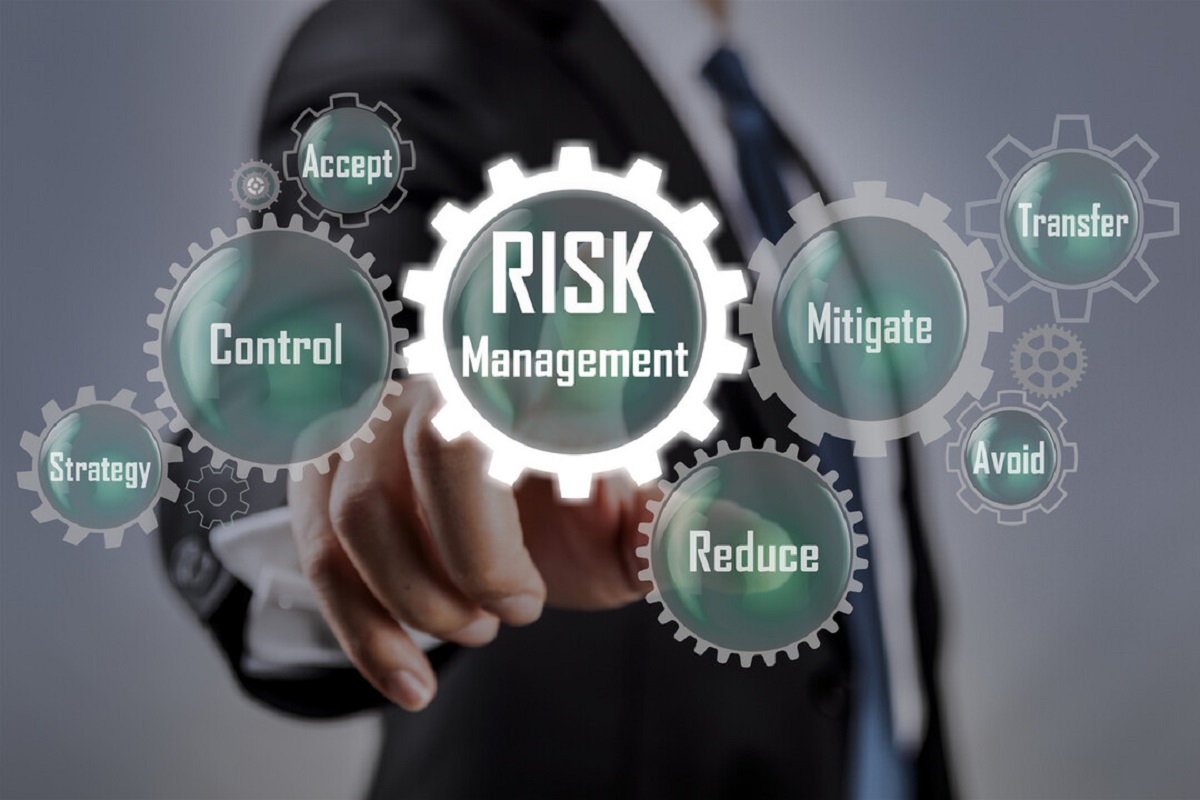Introduction
Stress testing is a crucial component of risk management in the banking industry. It involves evaluating a financial institution’s ability to withstand adverse economic conditions and shocks. By subjecting a bank’s balance sheet, capital adequacy, and liquidity positions to severe scenarios, stress testing provides insights into its resilience and helps identify potential vulnerabilities.
As an essential tool in assessing systemic risk, stress testing became widely adopted in the aftermath of the global financial crisis of 2008. The crisis revealed the need for banks to have a comprehensive understanding of their risk exposure and the potential impact of severe economic downturns. Stress testing provides a forward-looking approach to risk management by simulating extreme events and their impact on a bank’s financial health.
The primary purpose of stress testing in banking is to evaluate the potential impact of adverse scenarios on a bank’s solvency, liquidity, and overall financial stability. It aims to quantify the magnitude of potential losses, estimate the adequacy of capital reserves, and identify areas that require strategic adjustments to enhance risk management practices.
Beyond just meeting regulatory requirements, stress testing plays a vital role in bolstering confidence in the banking system and improving transparency. By subjecting banks to rigorous assessments, stress testing helps restore trust among market participants, investors, and depositors. It allows supervisors, regulators, and shareholders to gauge a bank’s resilience while providing valuable information for decision-making and risk mitigation.
Regulators worldwide have recognized the critical role of stress testing in financial stability and have implemented regulatory frameworks to ensure its effective implementation. These frameworks include guidelines on scenario selection, data requirements, capital planning, and transparency. Stress testing has now become a standard practice in the banking industry, enabling institutions to meet regulatory expectations and enhance their own risk management capabilities.
In the upcoming sections, we will delve deeper into the definition of stress testing in banking, explore its purpose and importance, discuss regulatory requirements, the process involved, types of stress tests, challenges faced, benefits, and the role of stress testing in risk management and decision making. By the end of this article, you will have a comprehensive understanding of stress testing and its significance in the banking industry.
Definition of Stress Testing in Banking
Stress testing in banking refers to the process of assessing a financial institution’s resilience to adverse economic conditions and shocks. It involves subjecting a bank’s balance sheet, capital adequacy, and liquidity positions to severe scenarios to determine its ability to withstand significant financial stress.
Stress testing goes beyond traditional risk assessment methods by evaluating the impact of extreme events on a bank’s financial health. It aims to identify vulnerabilities, quantify potential losses, and gauge the adequacy of capital reserves. By simulating severe economic downturns, stress testing provides insights into a bank’s risk exposure and helps inform risk management strategies.
At its core, stress testing involves constructing adverse scenarios that challenge the bank’s key financial indicators. These scenarios typically encompass macroeconomic variables, such as GDP growth, interest rates, inflation, unemployment rates, and other relevant factors specific to the bank’s operations. By subjecting the balance sheet to these adverse conditions, stress testing helps uncover potential weaknesses and evaluates the bank’s capacity to absorb losses.
Stress testing is not limited to assessing individual risks but also examines how different risk factors interact and amplify each other under adverse conditions. This holistic approach accounts for the interconnectedness and systemic risk dynamics within the financial system.
The main objective of stress testing is to provide a forward-looking and systematic assessment of a bank’s risk profile. It enables banks to understand their vulnerabilities, evaluate capital adequacy requirements, and make informed decisions to enhance risk management practices.
Stress testing takes into account a bank’s unique characteristics, such as its business model, geographical presence, and complexity. This customization ensures that the scenarios used in stress testing accurately reflect the risks faced by the institution.
Overall, stress testing in banking is a proactive approach to risk management that helps institutions quantify potential losses, identify vulnerabilities, and make strategic adjustments to enhance their resilience in the face of adverse economic conditions. By subjecting banks to rigorous assessments, stress testing contributes to the overall stability of the financial system.
Purpose and Importance of Stress Testing
The purpose of stress testing in banking is multi-faceted, with several key objectives that drive its importance in risk management and decision-making processes. Below, we explore the primary purposes and significance of stress testing:
Evaluating Resilience: The primary purpose of stress testing is to assess a bank’s resilience to adverse economic conditions. By subjecting the institution’s balance sheet, capital adequacy, and liquidity positions to extreme scenarios, stress tests help identify vulnerabilities and evaluate the bank’s ability to withstand financial stress. This evaluation provides valuable insights into a bank’s risk exposure and enables proactive risk management.
Quantifying Potential Losses: Stress testing allows banks to quantify potential losses that could arise from adverse scenarios. By simulating severe economic downturns, stress tests help estimate the magnitude of potential losses and their impact on the bank’s financial health. This quantitative assessment assists in evaluating the sufficiency of capital reserves and guiding strategic decisions related to risk management and capital planning.
Enhancing Risk Management: Stress testing plays a crucial role in enhancing risk management practices within banks. By subjecting the institution to extreme scenarios, stress tests help identify areas of weakness and highlight the need for improved risk mitigation measures. This process enables banks to make informed decisions regarding capital allocation, portfolio diversification, and the implementation of risk-reducing strategies.
Meeting Regulatory Requirements: Regulators worldwide have recognized the importance of stress testing in maintaining financial stability. As a result, banks are required to conduct stress tests to meet regulatory expectations and demonstrate their ability to withstand adverse economic conditions. Compliance with these requirements ensures that banks have robust risk management frameworks in place, contributing to overall financial system stability.
Restoring Market Confidence: Stress testing helps restore market confidence and promote transparency within the banking industry. By subjecting banks to rigorous assessments and disclosing the results to stakeholders, stress tests enhance transparency and provide reassurance to investors, depositors, and other market participants. This increased transparency helps restore trust and confidence in the banking system, contributing to its overall stability.
Improving Decision-Making: Stress testing provides valuable information for decision-making processes within banks. The results of stress tests help senior management and boards of directors gain insights into potential risks and vulnerabilities, enabling them to make data-driven decisions regarding risk mitigation, capital planning, and strategic adjustments. This information empowers banks to take proactive measures to enhance their resilience and navigate through challenging economic environments.
Overall, stress testing is indispensable in the banking industry, serving multiple purposes that contribute to risk management, regulatory compliance, market confidence, and informed decision-making. By evaluating a bank’s resilience and quantifying potential losses, stress tests help identify vulnerabilities and guide strategic actions to enhance the institution’s stability and long-term viability.
Regulatory Requirements for Stress Testing in Banking
Regulators worldwide have recognized the importance of stress testing in safeguarding financial stability and have implemented regulatory frameworks to ensure its effective implementation within the banking industry. These requirements aim to enhance risk management practices, promote transparency, and ensure banks have the necessary measures in place to withstand adverse economic conditions.
The specific regulatory requirements for stress testing may vary across jurisdictions, but some common elements can be found. These include:
1. Scenario Selection: Regulators require banks to design and utilize specific scenarios that adequately capture the risk characteristics of their portfolios. These scenarios should encompass a range of severe and plausible events, taking into account both macroeconomic factors and institution-specific risks. This ensures that stress tests adequately evaluate a bank’s risk exposure.
2. Data Requirements: Regulators specify the data that banks must use in their stress testing exercises. This includes historical data, current financial information, and relevant economic factors. Robust data quality and integrity are essential to ensure accurate and meaningful stress test results.
3. Capital Planning: Regulatory requirements often necessitate that stress tests be integrated into a bank’s capital planning process. Banks are expected to assess the impact of adverse scenarios on their capital adequacy and make strategic decisions regarding capital reserves, capital allocation, and capital raising plans to ensure they meet regulatory capital requirements.
4. Transparency and Reporting: Regulators require banks to disclose the results of their stress tests to relevant stakeholders, including supervisors, shareholders, and the public. Transparent reporting enhances market confidence and provides valuable information to investors and depositors about a bank’s resilience and risk management practices.
5. Governance and Documentation: Regulatory frameworks emphasize the importance of robust governance and documentation for stress testing. Banks are expected to have clear policies and procedures in place for stress testing, including well-defined roles and responsibilities, validation processes, and documentation of methodologies and assumptions used in stress tests.
6. Supervisory Review: Regulatory requirements often involve supervisory reviews of a bank’s stress testing practices. Supervisors assess the adequacy of stress test models, methodologies, and governance frameworks. They also review the bank’s capital adequacy and risk management plans based on stress test results, providing guidance and feedback to ensure compliance and continuous improvement.
7. Scenario Development Guidance: In some cases, regulators provide guidance on scenario development to ensure consistency and comparability across institutions. This guidance may include predefined macroeconomic scenarios, stress testing templates, and specific instructions on scenario calibration and assumptions.
Compliance with regulatory requirements for stress testing is crucial for banks to ensure they meet the necessary risk management standards and maintain a sound financial position. By adhering to these requirements, banks demonstrate their commitment to transparency, prudent risk management, and safeguarding financial stability.
Regulatory frameworks for stress testing evolve over time to adapt to changing market dynamics and emerging risks. Banks must stay informed and updated on applicable regulations to ensure their stress testing practices remain in compliance with the latest guidelines set forth by regulatory authorities.
Process of Stress Testing in Banking
The process of stress testing in banking involves several key steps and considerations to ensure its effectiveness in assessing a bank’s resilience to adverse economic conditions. While the specific process may vary across institutions, the following outlines the general framework:
1. Scenario Design: The first step in the stress testing process is scenario design. Banks identify and construct scenarios that reflect plausible and severe adverse events. These scenarios comprise macroeconomic variables, such as GDP growth, inflation, interest rates, unemployment rates, as well as institution-specific factors. Scenario design requires careful consideration, ensuring that scenarios are comprehensive and capture the risks inherent in the bank’s portfolio.
2. Data Collection and Validation: Once scenarios are defined, banks gather the necessary data to perform stress tests. This includes historical financial data, market data, economic indicators, and other relevant information. Data quality and integrity are crucial in ensuring accurate and reliable stress test results. Banks validate the collected data, identifying any gaps, inconsistencies, or anomalies that may affect the integrity of the stress testing exercise.
3. Model Development: Banks develop or employ stress testing models to assess the impact of adverse scenarios on their financial positions. These models simulate the potential outcomes of severe scenarios and measure the resulting impact on the bank’s capital adequacy, liquidity, profitability, and other risk indicators. Robust stress testing models take into account various interdependencies and risk factors, allowing for a comprehensive evaluation of the bank’s risk exposure.
4. Scenario Calibration and Execution: Once the stress testing models are developed, banks calibrate the scenarios based on historical data and expert judgment. Scenarios need to be credible and plausible, capturing a comprehensive range of risks while avoiding overly conservative or extreme assumptions. The stress tests are executed by applying the selected scenarios to the bank’s balance sheet, income statement, and other relevant financial components, generating simulated outcomes for analysis.
5. Analysis and Interpretation: The analysis of stress test results is a critical step in the process. Banks evaluate the impact of the adverse scenarios on key risk indicators, such as capital ratios, liquidity metrics, and earnings projections. The results are interpreted to identify vulnerabilities and potential areas of weakness within the bank’s risk management framework. This analysis enables banks to make informed decisions and take appropriate actions to strengthen their resilience and risk mitigation strategies.
6. Reporting and Communication: Stress test results are reported to relevant stakeholders, including board members, senior management, regulators, and supervisors. The report should provide a clear and concise overview of the stress test methodology, assumptions, and key findings. Transparent and effective communication of stress test results enhances market confidence, supports decision-making processes, and demonstrates a bank’s commitment to risk management and financial stability.
7. Monitoring and Governance: Stress testing is an ongoing process that requires continuous monitoring and governance. Banks establish robust governance frameworks to ensure that stress tests are conducted at regular intervals, reflecting changes in risk profiles and market conditions. Regular monitoring of risk indicators helps banks identify emerging risks and make proactive adjustments to their risk management strategies.
The process of stress testing in banking is iterative, allowing banks to learn from previous exercises and improve future stress test methodologies. Through this process, banks enhance their risk management practices, strengthen their resilience, and contribute to the overall stability of the financial system.
Key Components and Parameters of Stress Testing
Stress testing in banking involves the evaluation of various key components and parameters to assess a bank’s resilience to adverse economic conditions. These components and parameters serve as critical elements in understanding the potential risks and vulnerabilities within a banking institution. Below are the key components and parameters of stress testing:
1. Scenario Selection: Scenarios form a crucial component of stress testing. Banks carefully choose and construct scenarios that reflect severe and plausible adverse events. These scenarios encompass macroeconomic variables, such as GDP growth, interest rates, inflation, and unemployment rates, along with institution-specific factors. The selection of appropriate scenarios is essential to capture the risks inherent in the bank’s operations and enable a robust assessment of potential impacts.
2. Data Inputs: Stress testing relies on the availability of accurate and reliable data inputs. Banks collect and analyze various data elements, including historical financial data, market data, economic indicators, and other relevant information. These data inputs should be comprehensive and cover the specific risk exposures of the bank. Data validation and integrity checks are necessary to ensure the quality and reliability of the stress testing exercise.
3. Risk Factors: Stress testing assesses the impact of adverse scenarios on various risk factors within a bank’s operations. These risk factors include credit risk, market risk, liquidity risk, operational risk, and other relevant risks. By evaluating the potential impact on these risk factors, stress testing helps banks identify areas of vulnerability and strengthen their risk management strategies.
4. Capital Adequacy: Assessing the adequacy of capital is a crucial parameter in stress testing. Banks evaluate the potential impact of adverse scenarios on their capital positions, including Common Equity Tier 1 (CET1) capital ratios and other regulatory capital measures. Stress testing helps banks determine if their capital reserves are sufficient to absorb potential losses and meet regulatory requirements under severe economic conditions.
5. Liquidity Position: Stress testing examines a bank’s liquidity position by assessing the potential impact of adverse scenarios on funding sources, cash flows, and liquidity ratios. This analysis helps banks identify potential liquidity shortfalls and ensures they have adequate liquidity buffers in place to withstand liquidity stress events.
6. Risk Mitigation Measures: Stress testing considers the effectiveness of risk mitigation measures implemented by banks. This includes evaluating the impact of risk management strategies, hedging activities, and contingency plans on the bank’s overall resilience. Stress tests help identify areas where risk mitigation measures need to be strengthened or adjusted to better withstand adverse events.
7. Time Horizon: The time horizon of stress testing is an important parameter. It determines the duration over which the adverse scenarios are applied and evaluated. Banks commonly consider short-term scenarios, typically spanning one to three years, as well as long-term scenarios that may cover longer periods, such as five to ten years. The time horizon allows banks to assess the longer-term effects of severe economic conditions on their financial positions.
8. Sensitivity Analysis: Stress testing often incorporates sensitivity analysis to evaluate the impact of changes in key assumptions or risk factors on the bank’s financial performance. This analysis helps banks understand the sensitivity of their risk profiles to different variables and assess their resilience under various scenarios.
By considering these key components and parameters, stress testing provides banks with a comprehensive analysis of their resilience to adverse economic conditions. This evaluation allows banks to identify potential areas of weakness, implement appropriate risk mitigation strategies, and enhance their overall risk management practices.
Types of Stress Tests Commonly Used in Banking
Stress testing in banking encompasses various types of tests that evaluate a bank’s resilience to adverse economic conditions. These tests provide insights into different aspects of a bank’s risk exposure and help identify vulnerabilities in its financial position. Below are the types of stress tests commonly used in banking:
1. Capital Adequacy Stress Test: This type of stress test focuses on evaluating a bank’s capital adequacy under severe scenarios. It assesses the impact of adverse economic conditions on the bank’s capital reserves and measures its ability to maintain regulatory capital requirements. The capital adequacy stress test provides insights into the bank’s ability to absorb potential losses and support the continuity of its operations.
2. Credit Risk Stress Test: Credit risk stress tests evaluate the potential impact of adverse scenarios on a bank’s credit portfolio. It assesses the likelihood of default, credit losses, and changes in asset quality under severe economic downturns. By simulating scenarios such as significant increases in unemployment, interest rate hikes, or industry-specific crises, credit risk stress tests help banks identify the potential vulnerabilities within their loan portfolios.
3. Market Risk Stress Test: Market risk stress tests focus on evaluating the impact of adverse market conditions on a bank’s trading and investment portfolio. These tests assess the potential losses arising from extreme fluctuations in market prices, interest rates, foreign exchange rates, and other relevant market variables. Market risk stress tests enable banks to evaluate the sensitivity of their trading positions and assess the adequacy of risk management measures in volatile market conditions.
4. Liquidity Risk Stress Test: Liquidity risk stress tests evaluate a bank’s ability to withstand severe liquidity pressures. They assess the availability of funds, cash flows, and liquidity ratios under adverse scenarios, including potential disruptions in funding sources or significant withdrawals by depositors. Liquidity risk stress tests help banks identify potential liquidity shortfalls and inform the development of contingency plans and liquidity management strategies.
5. Operational Risk Stress Test: Operational risk stress tests evaluate the potential impact of adverse scenarios on a bank’s operational processes, systems, and infrastructure. These tests analyze the resilience of the bank’s operational capabilities under severe disruptions, such as cyber-attacks, natural disasters, or system failures. Operational risk stress tests enable banks to assess the robustness of their operational risk management frameworks and identify areas for improvement.
6. Systemic Risk Stress Test: Systemic risk stress tests evaluate the potential contagion effects of adverse scenarios on the overall financial system. They assess the interconnectedness among financial institutions and examine how shocks in one sector can propagate throughout the system. Systemic risk stress tests help banks and regulators identify potential vulnerabilities and systemic risks that could arise from severe economic conditions.
7. Reverse Stress Test: Reverse stress testing involves identifying extreme scenarios that could lead to the failure of a bank or result in significant losses. It aims to determine the specific triggers, risks, and vulnerabilities that could jeopardize the bank’s viability. Reverse stress testing helps banks and regulators understand worst-case scenarios and develop contingency plans to mitigate such risks.
Each type of stress test provides unique insights into a bank’s risk exposure and helps identify areas that require attention or improvement. By conducting a combination of these stress tests, banks can comprehensively assess their resilience to various adverse scenarios and enhance their risk management practices.
Challenges and Limitations of Stress Testing in Banking
While stress testing is a valuable tool for assessing a bank’s resilience to adverse economic conditions, it is not without its challenges and limitations. Understanding these challenges and limitations is crucial to ensure the effectiveness and reliability of stress testing in the banking industry. Here are some of the key challenges and limitations:
1. Data Limitations: Stress testing heavily relies on historical and current data to accurately simulate adverse scenarios. However, data availability, quality, and consistency can pose challenges. Banks may encounter limitations in accessing comprehensive and reliable data, especially during periods of financial stress. Data gaps or inconsistencies can impact the accuracy and reliability of stress test results.
2. Scenario Design: Constructing plausible and severe scenarios is essential for meaningful stress testing. However, designing scenarios that accurately capture potential risks and vulnerabilities can be challenging. It requires a deep understanding of various risk factors and their interdependencies. The complexity of economic and financial systems makes it difficult to predict the timing, magnitude, and cascading effects of severe events accurately.
3. Model Assumptions: Stress testing models heavily rely on assumptions to simulate the impact of adverse scenarios. The accuracy of model assumptions can significantly influence stress test outcomes. However, assumptions may be subject to uncertainty or be based on historical correlations that may not hold in extreme events. Ensuring appropriate and realistic model assumptions is a persistent challenge in stress testing.
4. Modeling Limitations: Stress testing models simplify and abstract complex real-world systems, which can lead to modeling limitations. Models may not fully capture the breadth and depth of risks faced by banks. Assumptions made and the level of complexity adopted in the models may not fully reflect the interconnectedness of risks or the potential spillover effects in the financial system.
5. Tail Risk Evaluation: Stress testing focuses on extreme events that have a low probability of occurring. Assessing tail risks, such as unprecedented events or black swan events, is challenging due to the lack of historical data or limited information on the potential impacts. Stress testing may struggle to capture risks that are entirely outside the realm of prior experiences.
6. Dynamic Nature of Risks: The banking industry operates in a dynamic environment, where risks evolve over time. Stress testing relies on static assumptions and scenarios, which may not adequately capture the changing risk landscape and emerging vulnerabilities. Continuous monitoring and updating of stress testing models and scenarios are essential to account for evolving risks.
7. Interdependencies and Systemic Risks: Stress testing typically focuses on assessing individual risks within a bank. However, systemic risks and interdependencies among financial institutions may not be fully captured in individual stress tests. Considering the broader network effects and systemic risks is a challenge in stress testing, as they require coordination and cooperation among multiple stakeholders.
Despite these challenges and limitations, stress testing remains a valuable tool for assessing and managing risks in the banking industry. Recognizing these limitations and continuously improving stress testing methodologies can enhance the effectiveness and reliability of stress tests, allowing banks to make informed decisions and strengthen their resilience to adverse economic conditions.
Benefits and Outcomes of Stress Testing in Banking
Stress testing in banking offers several benefits and outcomes that contribute to the overall resilience, risk management, and stability of financial institutions. By subjecting banks to rigorous assessments, stress testing provides valuable insights and enables informed decision-making. Here are some of the key benefits and outcomes of stress testing:
1. Risk Identification and Assessment: Stress testing helps banks identify and assess potential risks and vulnerabilities within their operations. By subjecting their balance sheets, capital adequacy, and liquidity positions to severe scenarios, banks gain a comprehensive understanding of their exposure to different risk factors. This assessment enables banks to take proactive measures in mitigating identified risks and strengthening their risk management practices.
2. Capital Adequacy Assessment: Stress testing helps banks assess the adequacy of their capital reserves. By quantifying potential losses under adverse scenarios, stress tests evaluate whether banks have sufficient capital buffers to absorb unexpected shocks. This assessment informs capital planning decisions, enhances risk mitigation strategies, and ensures compliance with regulatory capital requirements.
3. Enhancing Risk Management: Stress testing plays a crucial role in improving risk management practices within banks. By evaluating the impact of adverse scenarios, stress tests highlight areas of weakness and identify potential risk mitigation measures. This process enables banks to develop and implement robust risk management strategies, including portfolio diversification, hedging, and the implementation of stress-related policies and procedures.
4. Strategic Decision-Making: Stress testing provides valuable information that guides strategic decision-making within banks. By analyzing stress test results, banks can make informed decisions regarding capital allocation, product offerings, pricing strategies, and business expansion. Stress testing enhances the ability to assess the risks associated with strategic initiatives and supports the development of contingency plans.
5. Transparency and Stakeholder Confidence: Stress testing enhances transparency and promotes stakeholder confidence in the banking industry. By disclosing stress test results to regulators, supervisors, shareholders, and the public, banks demonstrate their commitment to risk management and financial stability. Transparent reporting increases market confidence, fosters trust among investors and depositors, and contributes to overall market stability.
6. Regulatory Compliance: Stress testing is a regulatory requirement in many jurisdictions. Banks need to demonstrate compliance with regulatory expectations by conducting regular stress tests. By meeting regulatory requirements, banks enhance their credibility, demonstrate sound risk management practices, and contribute to the overall stability of the financial system.
7. Proactive Risk Mitigation: Stress testing helps banks identify potential risks and vulnerabilities before they materialize. By identifying weaknesses and potential sources of losses, banks can proactively take steps to mitigate these risks. Stress testing enables banks to be better prepared for adverse economic conditions, minimizing the potential impact on their financial positions.
Overall, stress testing in banking provides numerous benefits and outcomes, including enhanced risk identification and assessment, improved risk management practices, informed decision-making, increased transparency, regulatory compliance, and proactive risk mitigation. By leveraging the insights gained from stress tests, banks can strengthen their resilience, enhance their risk management frameworks, and foster confidence among stakeholders.
Role of Stress Testing in Risk Management and Decision Making in Banking
Stress testing plays a critical role in risk management and decision making in the banking industry. By subjecting banks to rigorous assessments of their resilience to adverse economic conditions, stress testing provides valuable insights that inform risk management strategies and support data-driven decision making. Here are the key roles of stress testing in risk management and decision making:
1. Assessing Resilience: Stress testing enables banks to assess their resilience to adverse economic conditions. By subjecting their balance sheets, capital adequacy, and liquidity positions to severe scenarios, banks can identify potential vulnerabilities and determine the potential impact on their financial health. This assessment helps banks understand their risk exposure and informs the development of risk mitigation strategies.
2. Identifying Risks: Stress testing helps identify potential risks and vulnerabilities within banks’ operations. By simulating adverse scenarios, stress tests evaluate various risk factors, such as credit risk, market risk, liquidity risk, and operational risk. Identifying these risks allows banks to proactively implement measures to mitigate them and prevent potential losses.
3. Quantifying Potential Losses: Stress testing quantifies the potential losses that banks may face under adverse scenarios. By assessing the impact of severe economic conditions on their balance sheets, stress tests help banks estimate potential losses in areas such as loan portfolios, trading portfolios, and investment portfolios. Quantifying potential losses enables banks to assess the adequacy of capital reserves and make informed decisions regarding risk management strategies.
4. Capital Planning: Stress testing is instrumental in capital planning for banks. By evaluating the impact of adverse scenarios on their capital positions, stress tests help banks determine whether they have sufficient capital reserves to absorb potential losses. This assessment guides capital planning decisions, including capital allocation, capital raising plans, and capital adequacy management.
5. Enhancing Risk Mitigation Strategies: Stress testing highlights areas of weakness and enables banks to strengthen their risk mitigation strategies. By identifying vulnerabilities, stress tests help banks refine their risk management frameworks and implement measures to enhance risk controls, including portfolio diversification, hedging strategies, and the development of policies and procedures.
6. Supporting Contingency Planning: Stress testing plays a pivotal role in supporting contingency planning within banks. By evaluating the impact of adverse scenarios, stress tests assist banks in identifying potential stress triggers and developing contingency plans. These plans enable banks to prepare for and respond effectively to severe events, ensuring the continuity of their operations even in the face of adverse economic conditions.
7. Informed Decision Making: Stress testing provides banks with valuable information that supports informed decision making. By analyzing stress test results, banks can better assess risks associated with strategic initiatives, pricing decisions, product offerings, and business expansion. The insights gained from stress testing guide senior management and decision-makers in making data-driven decisions aimed at enhancing the bank’s resilience and profitability.
With its ability to identify risks, assess resilience, quantify potential losses, and support informed decision making, stress testing plays a vital role in risk management and decision making in the banking industry. The insights gained from stress testing help banks enhance their risk management frameworks, strengthen their resilience, and ensure the soundness and stability of the financial system.
Conclusion
Stress testing is a fundamental tool in risk management and decision making within the banking industry. It provides valuable insights into a bank’s resilience to adverse economic conditions, helping identify potential vulnerabilities and quantify potential losses. The comprehensive assessment conducted through stress testing enhances risk management frameworks, strengthens capital planning, and supports informed decision making.
By subjecting banks to rigorous scenarios and simulations, stress testing plays a crucial role in identifying risks, assessing resilience, and enhancing risk mitigation strategies. It enables banks to proactively identify potential weaknesses, implement necessary measures, and develop contingency plans to mitigate risks. Stress testing also supports capital planning decisions, as it assesses the adequacy of a bank’s capital reserves under severe scenarios and helps maintain compliance with regulatory requirements.
The role of stress testing goes beyond regulatory compliance. It fosters transparency and confidence among stakeholders, including investors, regulators, and the public. Transparent reporting and communication of stress test results promote trust and contribute to the stability of the financial system.
Despite its benefits, stress testing does come with challenges and limitations, such as data availability and quality, scenario design, and the dynamic nature of risks. However, banks can overcome these challenges by leveraging expert knowledge, improving data collection and validation processes, and continuously enhancing stress testing methodologies.
In conclusion, stress testing is a vital tool that enables banks to assess their resilience, identify risks, and make informed decisions to enhance risk management practices. By embracing stress testing and leveraging its insights, banks can better navigate uncertain economic conditions, strengthen their risk resilience, and contribute to the overall stability and soundness of the banking industry.

























